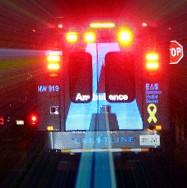 An analysis by researchers at Cincinnati Children’s Hospital Medical Center shows the number of young children hospitalized from a potentially toxic dose of medication has risen markedly in recent years. The findings by Randall Bond and colleagues from Cincinnati Children’s appear online in the Journal of Pediatrics.
An analysis by researchers at Cincinnati Children’s Hospital Medical Center shows the number of young children hospitalized from a potentially toxic dose of medication has risen markedly in recent years. The findings by Randall Bond and colleagues from Cincinnati Children’s appear online in the Journal of Pediatrics.
Bond and his team reviewed more than 453,000 records from 2001 to 2008 in the National Poison Data System of the American Association of Poison Control Centers. That database holds more than 50 million poison exposure case records, with more than two million new records added each year. The team studied the records of children 5 years and younger exposed to a potentially toxic dose of a single pharmaceutical agent, either prescription or over-the-counter.
The results showed that exposure to prescription products accounted for over half (55%) of the emergency visits and three-quarters (76%) of admissions, with seven in 10 cases (71%) resulting in significant harm. Levels of ingestion of opioids, most often prescribed to treat pain; sedatives-hypnotics, frequently prescribed as sleep aids; and cardiovascular medications were particularly high, according to the researchers.
Over the eight year period, the number of medication poisoning cases among young children rose sharply. The researchers calculate that the number of calls to poison centers, hospital admissions, emergency department use, and injuries from ingested medications each rose by a quarter to a third or more over that period. All of these rates of increase were significantly higher than the eight percent population increase for children 5 and under during this time.
The largest part of the rise in admissions, injuries, and death, say the researchers, was due to children finding and ingesting medication on their own. Therapeutic errors at home were uncommon and increased only minimally.
Bond and his colleagues point to the increasing number of prescription drugs in U.S. households as a likely cause of the greater number of medication poisoning cases among young children. A 1998-99 survey found that half of adults had taken at least one prescription medication in the preceding week and seven percent had taken five prescriptions or more. By 2006, a similar survey found that more than half (55%) had taken at least one prescription medication in the preceding week and 11 percent had taken five or more prescriptions.
The Centers for Disease Control and Prevention started in 2008 the PROTECT Initiative — a collaboration among public health agencies, private sector companies, professional organizations, consumer/patient advocates, and academic experts — to develop strategies to keep children safe from unintentional medication overdoses. The initiative has developed voluntary guidelines for standardizing and clarifying dosing measures for over-the-counter liquid medicines. It also encourages development of new safety packaging designed to decrease the number and severity of unsupervised drug ingestion by young children.
Read more: Study: Pediatric Drug Labeling Tough to Understand
Photo: Michael Gil/Flickr
* * *

 RSS - Posts
RSS - Posts
[…] Read more: Medication Poisoning of Young Children Rising Sharply […]
[…] Read more: Medication Poisoning of Young Children Rising Sharply […]
[…] Read more: Medication Poisoning of Young Children Rising Sharply […]
[…] Read more: Medication Poisoning of Young Children Rising Sharply […]